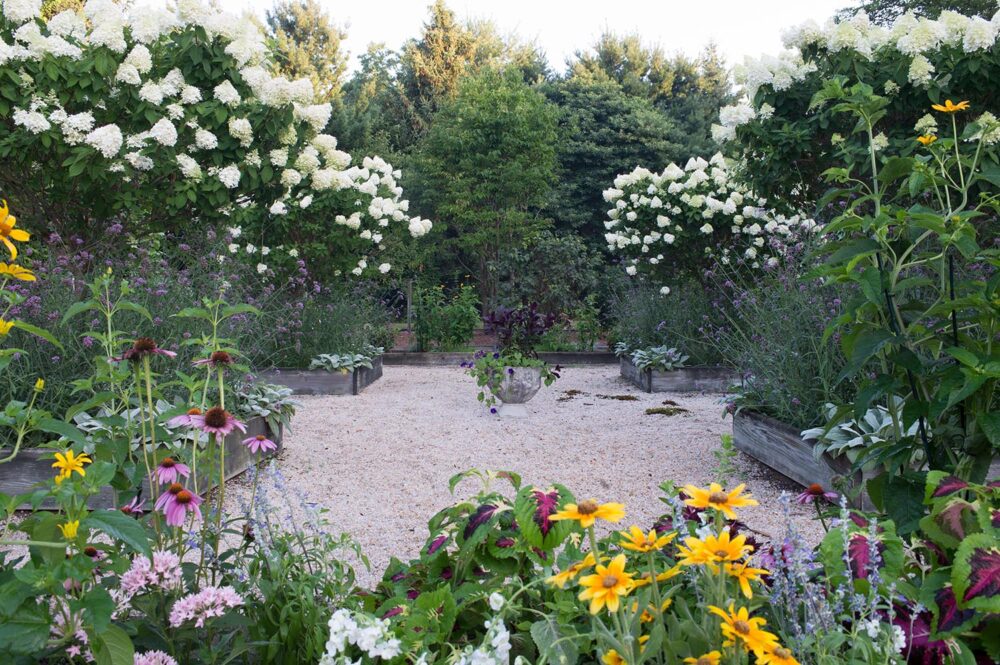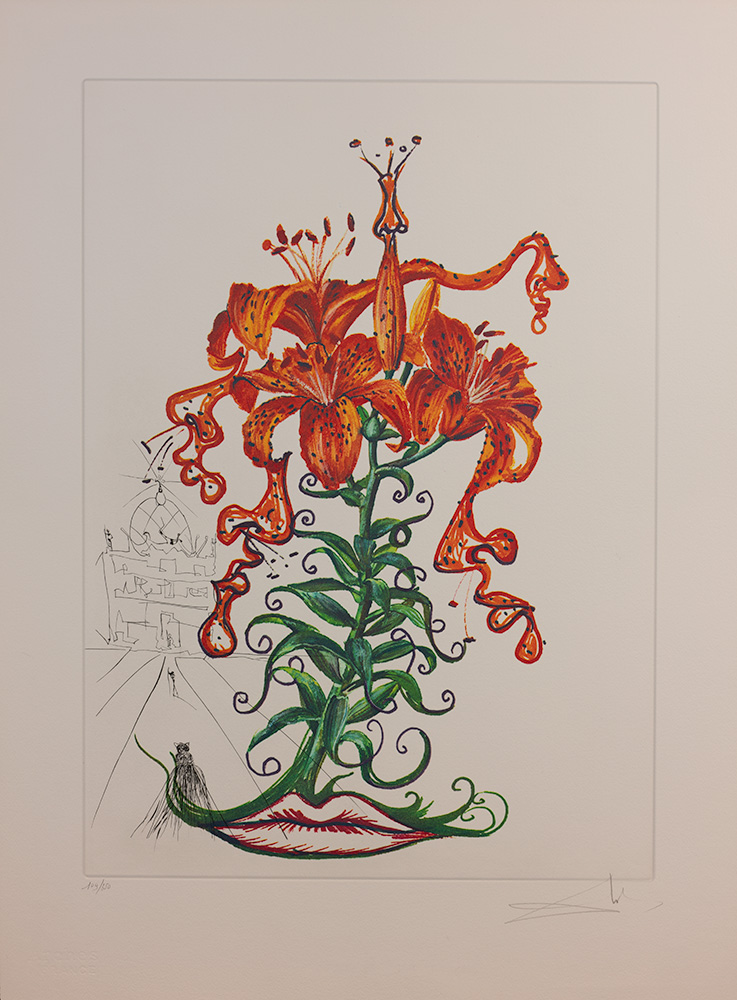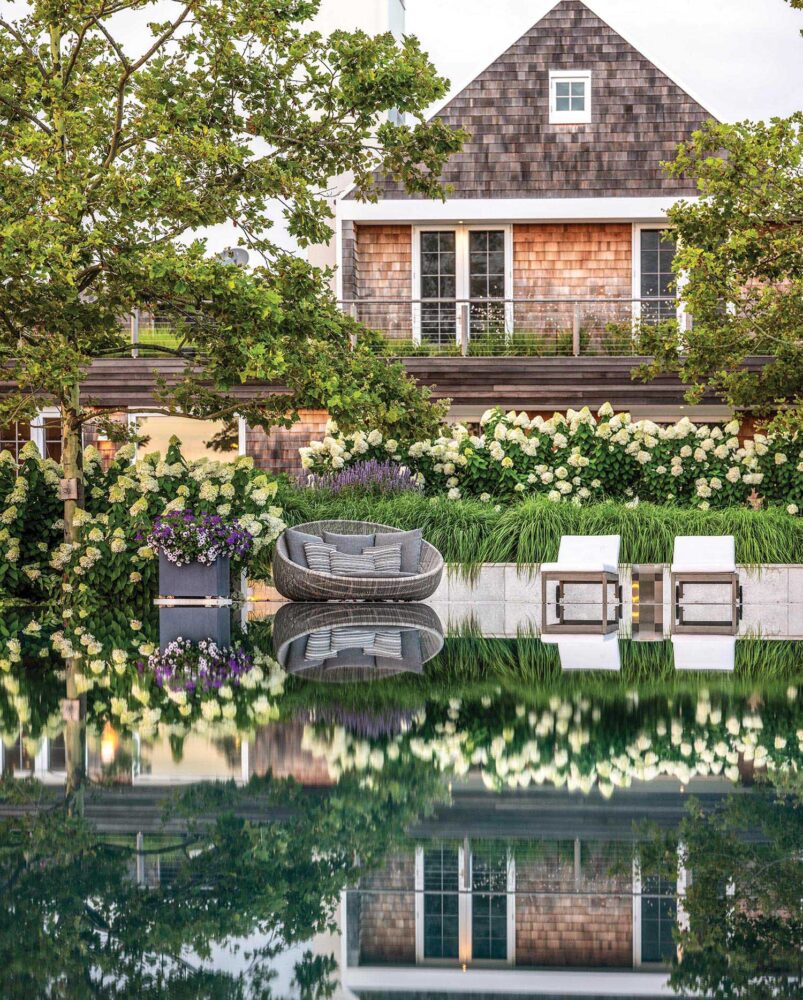
Monica Delgado of Simple Florals
INSPIRATION
I wanted to create a simple arrangement that was minimal in style but at the same time modern and fresh. My inspiration came from the traditional Japanese ikebana style. I did two things that were unexpected. First, I manually opened the tulip petals, completely changing the traditional look of closed tulips. I think most people will get a kick out of that once they realize that these are actually tulips. Second, I used tulips that were dyed brown, which creates these very interesting veins throughout.
For styling tips for the arrangements above, see Monica Delgado’s floral tutorial at the end of this post.
FLOWER SHOW
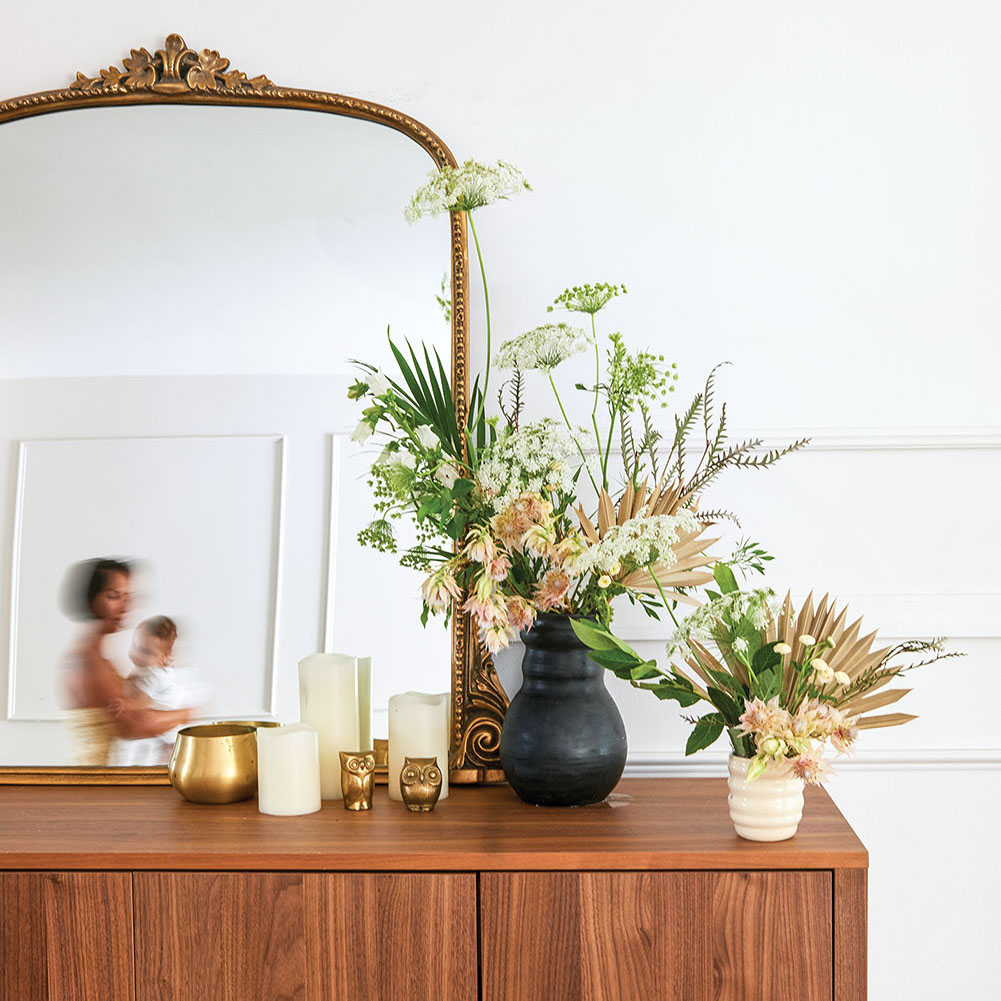
For a pair of arrangements on her dresser, Monica used preserved sun palms, Queen Anne’s lace, foraged palm leaf, ‘Blushing Bride’ protea, Grevillea chamomile, and vases from Kuu Pottery.

Cymbidium orchid, carnation, burgundy cotinus, ‘Cappuccino’ rose, and plumosa fern appear to float in this cloud-like design.
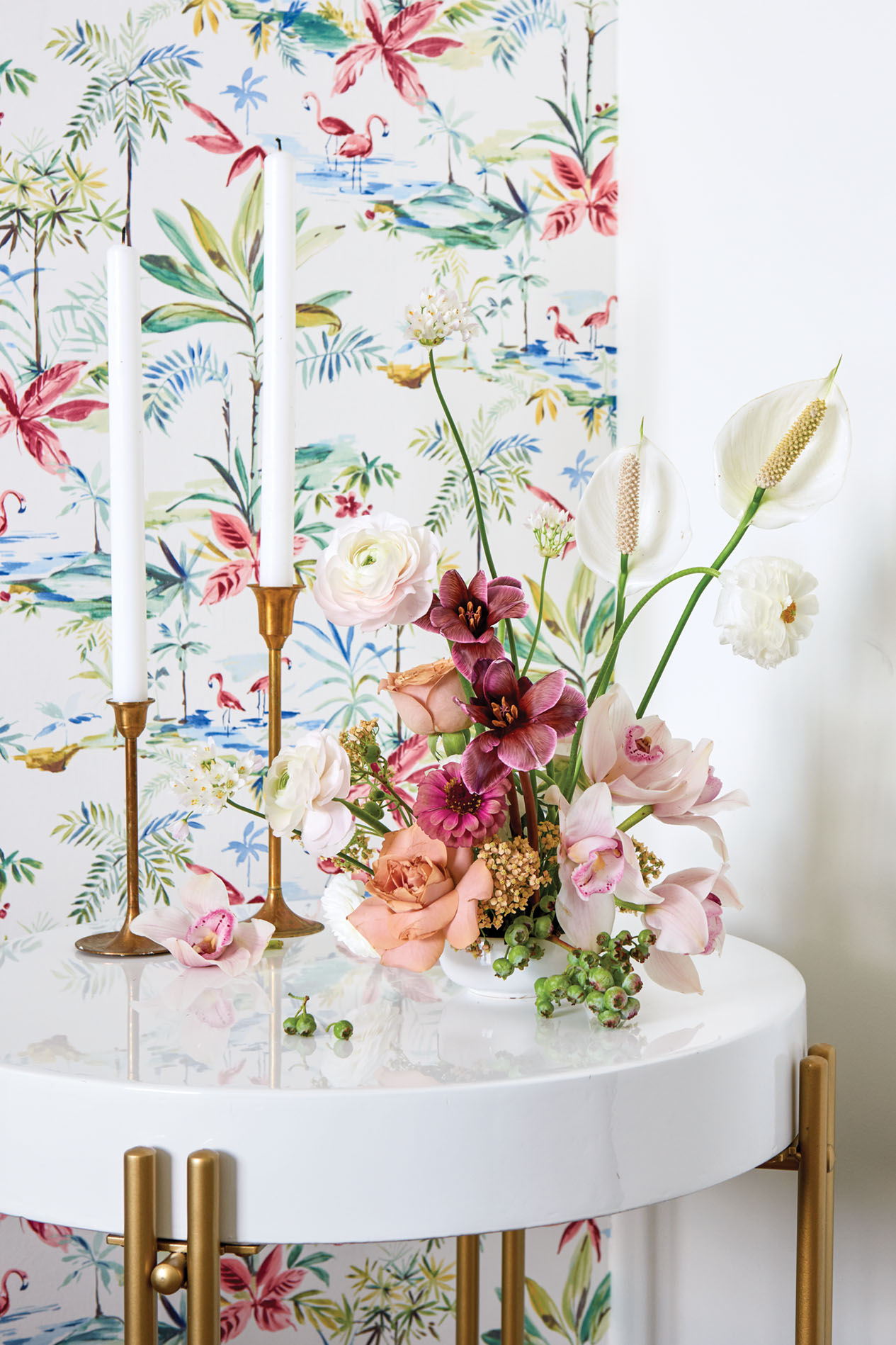
“I like to have elements that are unexpected and even whimsical. My favorite thing is when floral art inspires a moment of delight.” — Monica Delgado
Now, time to try it at home.
MONICA’S FLORAL TUTORIAL
Produced by Alice Welsh Doyle | Photography by Monica Buck | Floral design by Monica Delgado of Simple Florals, simpleflorals.com

